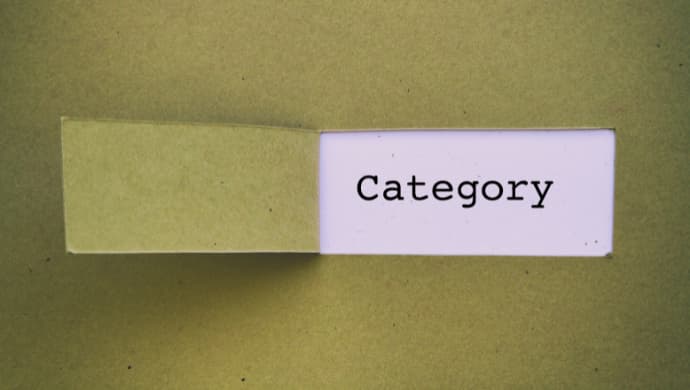The Great Ecosystem and Category Shift

…And Am I Ready?
We are always in a continual state of ecosystem and category disruption.
Imagine jumping in a time-machine back to your local supermarket 30 years ago. Many of the categories from today wouldn’t exist. There wouldn’t be an organic section, or “plant-based” options for pasta or meat. There wouldn’t be an “energy drink” section. “Vegan” or “high-protein” as an additional element to our regular foodstuffs wouldn’t have happened yet.
And if we do a reverse time-journey to our supermarket 30 years in the future, it will be filled with new categories that we never thought of….and never thought that we needed.
What is at the core of this evolution and constant change is a problem, that is redefined and explained to us. It is a problem we didn’t even realize we have:
“Organic” I don’t trust the food supply-chain and want additional assurances
“Vegan” I don’t want to make all of my vegetarian food from scratch
“High-Protein” I worry about getting enough protein (for myself or family members)
“Energy Drink” I want a pick-me up and regular sugar-based colas are not enough
These categories hide in plain sight, across industries.
Switch gears from consumer to corporate, such as finance / investing, and it seems obvious that real estate as a capital asset should be available as an exchange-traded asset and be part of my portfolio (a “REIT”).
When I was working at a large bank and launching the first REIT product in the Asia-Pacific region a huge amount of education and awareness was needed to explain this problem (and new category): “Real estate is expensive to invest in and can have significant risk, but an aggregated fund, linked to assets, and managed by experts enables me to solve this problem”. I gain diversification in my assets and this new category is very clearly explained and labelled for me. And so: “I need to have a REIT in my portfolio”, and it becomes an established category.
Markets and categories are thus in a continual flux and redefinition. And importantly the ones who lead the change and define the category are usually the ones who dominate it. There’s plenty of data and precedence around this “Category King” outcome and their consistent lion’s share of the market.
For example, have a look at Paul Gerovski and his Nobel winning research on how markets and categories consistently evolve.
But now all indications are that we are in an extraordinary time of accelerated changeand new categories being defined, and monetized.
Consider these four accelerants and ecosystems being impacted:
Supply and Value Chain Disruption
The reverberations of the pandemic are still being felt. Given it is one of the biggest “black swan” events of our lifetime the changes and impact will resonate for the rest of our careers. In particular, it exposed the fragility of our global value chains. These established “GVCs” account for 70 percent of global trade. For three decades we saw the primary driver around lowering cost, and in this era of trade liberalization and “the world is flat” mentality the concentration of value chains became extreme.
Now we are seeing radical changes to the ecosystems that were built up. “Near Shoring” or “Friend Shoring” are changing value chains. A swing to the right and nationalism and has also led to increased tariffs, requirements, and trade disputes. It is more difficult for smaller companies to conduct cross-border trade today than it was 10 years ago! Customs documentation is more complex. Shipping, cost, and predictability is more challenging.
Asia-based innovators such as Cogoport are great examples of companies seizing this opportunity and defining a new category around a Global Trade Platform. Small to mid-size companies that don’t have dedicated internal teams for overseas trade and complex shipping decisions, customs documentation, or insurance can be guided on optimal decisions. This drives confidence for these companies to expand their business and horizons.
It also leads to innovators creating new categories to deal with this changed environment. It is an area prime for disruption and new Category Kings to emerge!
Web 3.0
Web 3.0 at its heart is a new level of decentralization compared to what the internet represents to us today.
It is decentralized across Computer Networks (and data), Finance (with crypto and blockchain as core elements) as well as for Identity.
Consider the evolution and current state for Identity that we find ourselves in. Web 1.0 was built upon “username and password”. Web 2.0 evolved to “login via Google, Apple, Facebook, or Twitter”.
The ramifications for identity, as well as data, have been monumental. We find ourselves in a time of almost outrageous concentration of data and analytics in a few, massive technology players (“FANG” …. Or “The Magnficent Seven”).
Now contemplate the Web 3.0 emerging vision around privacy, security, and freedom, and connecting through your digital wallet, with login via a Web 3.0 ID (which can be real-world or anonymous). This means control of your own data and you are not reliant of centralized corporations or institutions.
This current imbalance of too much data and power in too few hands is a beacon for innovators and for new categories to form. If this seems too far-fetched, consider that two decades ago the biggest tech players were IBM, Cisco, HP and Dell!
Climate and Sustainability
Could there be a bigger elephant (ecosystem) in the room? Climate and sustainability will necessary be at the top of the geopolitical, and increasingly business, agenda. It is the ultimate “ecosystem” play, resulting in a plethora of new categories and way of thinking, that said:
Measurement is key (and is evolving rapidly). Carbon measurement, tracking, valuation and trading will formalize and will create tremendous new solutions and categories. New models and metrics are forming across innovations and start-ups in the sustainability space. Linear models for growth and development are being challenged with “sustainable boundary prototypes” (sometimes called “doughnut economics”). Innovators will eventually crack this problem, driving new thinking and aligned, new categories.
“ESG” is broken … Speaking and interacting with leading players and start-ups in the carbon footprint space, it’s clear that ESG is an unwieldly combination of measurements from carbon, to diversity and inclusion. “It is the best we have” is a common lament and is ripe for disruption and a new model to emerge.
Cities are critical …Climate and Sustainability is a Global Issue, but we have to solve it at the City Level:
- Cities account for 75% of global CO2 emissions (but are only 3% of total land-mass).
- 50% of all global waste is concentrated in cities, as well as 75% of natural resource consumption.
SE Asia’s Atlas Capital and their Adaptive Cities Challenge for start-ups is a great example of the increasing understanding and focus on “city as a lab”.
Climate and Sustainability is thus primed as a key source of new categories, and a radically modified ecosystem of players. Not only is this inevitable, but we need it to happen faster!
AI and “Work” As We Know It
Imagine the implications for “work” itself changing … how big is that? Even before the hype and explosion of AI discussion, key Asia-based players like Laiye were looking at the practical, yet massive impact of AI on work, and the new category of a “Work Execution System”.
Existing categories such as intelligent document processing (machine learning combined with computer vision) now combined with massively enhanced large language models will further remove low-productivity areas of our work. Invoice processing; timesheets; expenses; purchase orders; tax-filings; business trip bookings; project-management; are examples of the massive areas of day-to-day work which are manual, repetitive and tedious.
But when the very nature of “work” experiences a radical, accelerated change, how does the ecosystem of existing technologies and players change? When we each have a personalized, digital assistant how will our work patterns change? What are the new categories that will emerge?
These four examples of ecosystems being disrupted should then catalyze our next big questions:
What new categories will form and how will I seize these opportunities?
If I don’t seize them, then what are the ramifications when someone else does?
Lead! Don’t Follow!
Those Who Design the Category Are Best Poised to Dominate It!
Also published on e27

#CategoryDesign #EcosystemStrategy #BusinessEcosystem #CategoryDisruption
Solutions
The Out-Position team has experience and a track-record that you can leverage and catalyse for your category strategy and design.
Contact us
We work alongside you for this design-thinking process, from the problem clarity and category defined, to a powerful point of view.